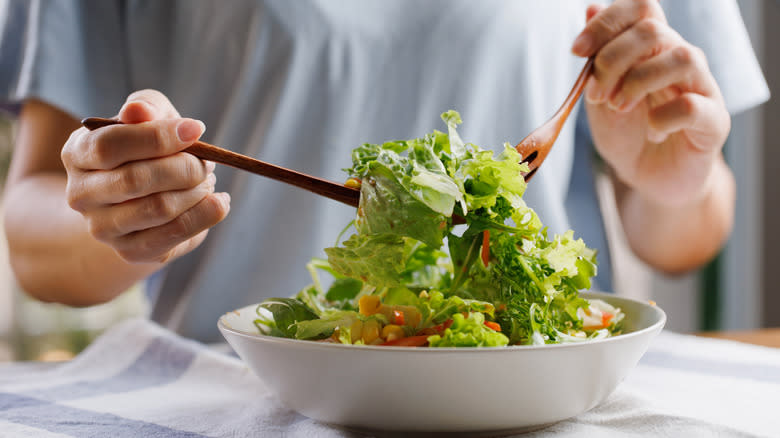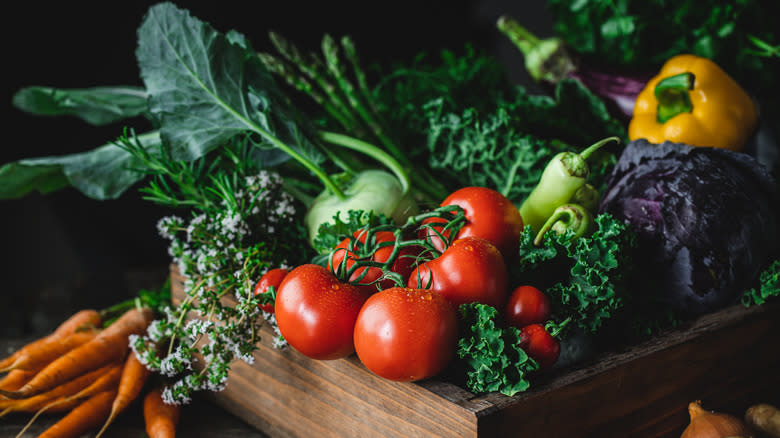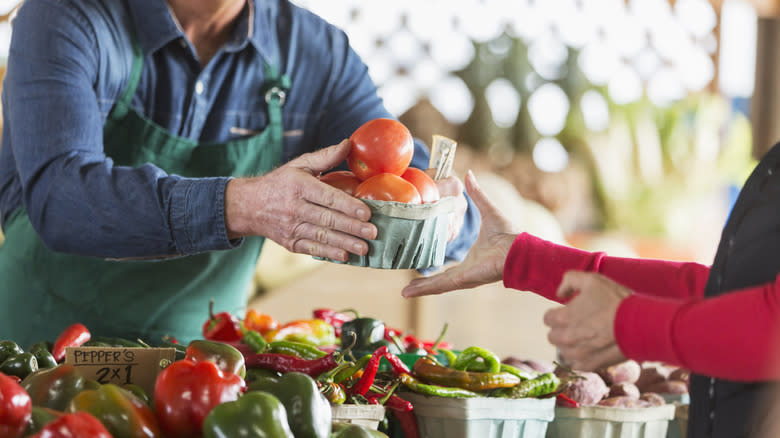The Easy Way To Make Cheaper Homemade Salads

Salad always seems like such a good idea when you're cruising the aisles of the produce section, doesn't it? It can be easy to get carried away tossing bags of lettuce mix and baby cucumbers into the cart, but once you get all of those ingredients to the checkout, the cost really starts to add up. Even worse, you can spend a bunch on salad supplies only for them to go bad in a few days, which is a huge waste of food and money. If you're trying to eat more salads at home, and you want to save a few dollars, the most important rule is to always buy produce that's in season.
Eating in season isn't just a restaurant catchphrase to try and lure foodies in the door. It's actually a smart way to buy produce because it's good for the environment and supports the local farming economy. More importantly, fresh, in-season fruits and vegetables taste amazing, and you can save a ton of money when there's plenty of supply, so there's almost no reason fill your salad bowl with anything other else.
Read more: 12 Vegetables And Fruits That Used To Look Very Different
Off-Season Veggies Are Pricey

If you've been scrolling social media or recipe collections in search of salad inspiration, keep the calendar in mind while you're meal planning since anything out of season will cost you dearly. Yes, it's nice to have ingredients like blueberries available all year round, but unless it's summertime (when the berries are in season in the U.S.), they have to be imported from somewhere else, and shipping is expensive. Those costs are passed on to you, which is why a pint of fresh berries is so pricey in the middle of January. The same is true for tomatoes, corn, stone fruits, expensive mushrooms, and more.
Not only is shipping a factor in the price of your salad supplies, produce that's been harvested far away has a much shorter shelf life. This is because it takes time to get from the field to your shopping cart, and the freshness clock starts ticking the minute the fruit or vegetable is picked. Depending on how far away it had to travel, imported produce can start to spoil in less a week, while local fruits and vegetables can last for a couple of weeks.
Supply And Demand Is A Big Factor

The price of produce also hinges heavily on supply and demand, and seasonality makes a huge difference. If there aren't a lot of fresh cucumbers on the market at the moment, for example, the ones that are available will cost a lot more. This is another great reason to buy what's in season because when the crops come in, there are tons of tomatoes, fresh herbs, kale, and summer squash to fill up your salad bowl, and it's all priced to move because there's so much of it.
If you're not sure what foods are in season in your area, the best place to find out is at a local farmers market. Small-scale farmers who grow food in your area will always have what's available at the moment, and if you have questions about specific veggies, they're usually more than happy to answer. If you don't live close to a market, however, you can also check out the USDA's seasonal produce guide, which will give you a general idea of what to buy and when, as well as Daily Meal's handy guide. For more specific regions, try reaching out to your local agricultural extension program, which is usually a part of the state university system. Educate yourself about what's in season, and next time you head to the grocery store for salad inspiration, you'll be armed with enough knowledge to resist those expensive imported tomatoes that are calling your name.
Read the original article on Daily Meal

